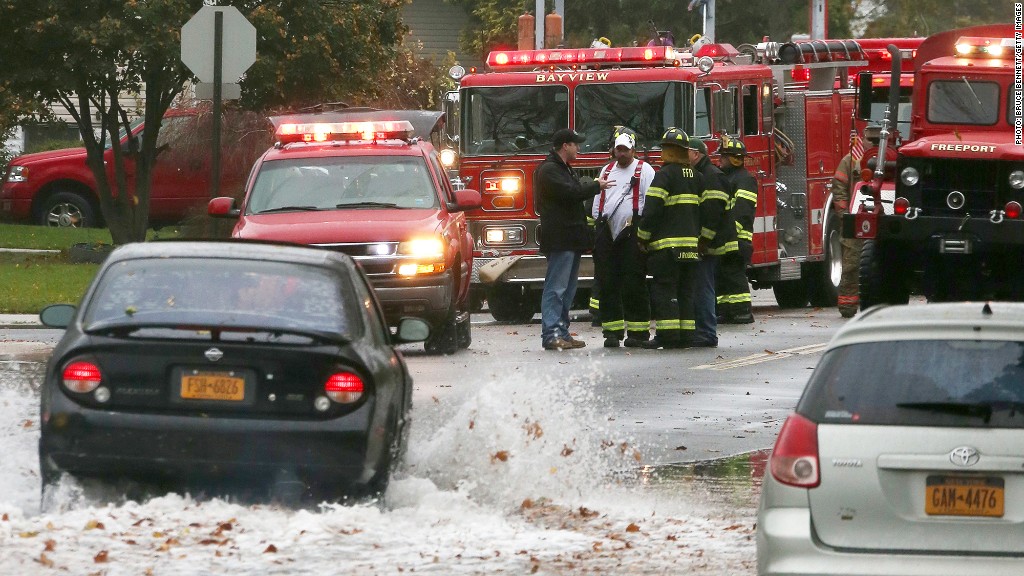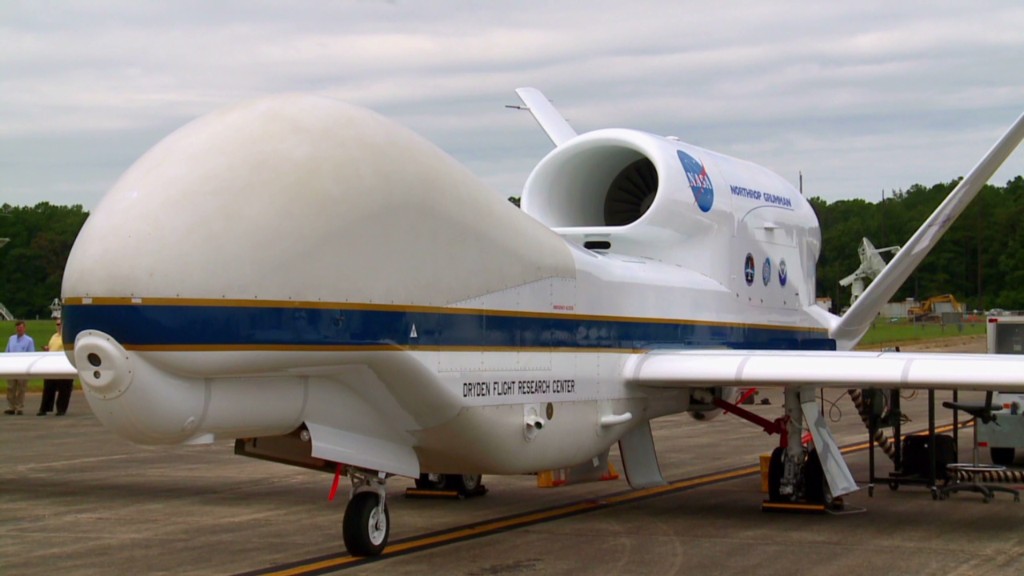
As Hurricane Sandy churned toward the Northeast, wireless carriers spent the weekend battle-proofing their networks.
Verizon (VZ) readied repair equipment, Sprint (S) engineers deployed backup generators just outside the storm path and AT&T (T) installed new batteries at cell sites. The nation's three major carriers shut down most retail stores in the mid-Atlantic region and New England on Monday.
With most preparations complete, it's now time to wait and see what havoc Sandy brings.
Carriers readied a fleet of emergency equipment with some peculiar, farm-like names: COWs (Cells On Wheels), COLTs (Cells On Light Trucks), and GOaTs (Generators on Trailers). These temporary cell towers, generators, diesel trucks and sand bags are stationed along the storm's edge, and action teams are on standby to roll in with them as soon as something goes down. The carriers' monitoring centers are watching their networks for any signs of trouble.
Flooding and winds can sometimes threaten cell towers, but most are strong enough to handle the worst that even a Category 5 hurricane can bring. Sprint's towers, for instance, are built to withstand winds of up to 110 miles per hour, a company spokeswoman said.
But she also noted that frequently hit areas like Florida tend to have cell towers on high ground, unlike the areas where Sandy is expected to strike. Flooding could make it difficult to reach cell towers that have lost power. In preparation for Sandy, many of Sprint's cell sites were sandbagged.

Power outages are by far the biggest threat to cell towers during a hurricane. That's why many towers have battery backups, which can power the cell for a day or two. Many also have backup diesel generators in case the battery fails. Cell phone companies have contracts with local diesel providers to keep the generators refilled.
If flooding from Sandy makes the towers unreachable, that's when the cell phone companies will roll out the COLTs and COWs, forming makeshift cell towers in an attempt to maintain constant coverage.
That's crucial not only for customers, but also for first responders. Each of the biggest carriers has a special team that works directly with law enforcement to ensure they have capacity to communicate in a disaster.
Cell phone carriers also need to keep their networks from overloading when a serious storm hits. When Hurricane Katrina made landfall in New Orleans on Aug. 29, 2005, AT&T's network was overwhelmed with calls in and out of the Gulf Coast region. At one point that day, 10 million people tried to call into New Orleans simultaneously. It was among the biggest localized calling events in the network's history.
That's why all three carriers monitor their networks from both central and regional command centers, constantly communicating with responders on the ground and rerouting traffic when necessary.
Emergency coordinators are counting on the wireless networks to hold up. The Federal Emergency Management Agency fired off a tweet Monday morning suggesting people take advantage of their mobile gadgets: "Phone lines may be congested during/after #Sandy. Let loved ones know you're OK by sending a text or updating your social networks."

